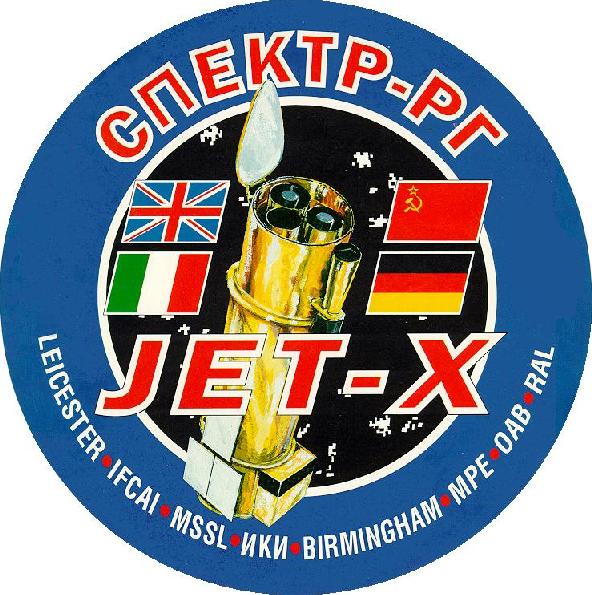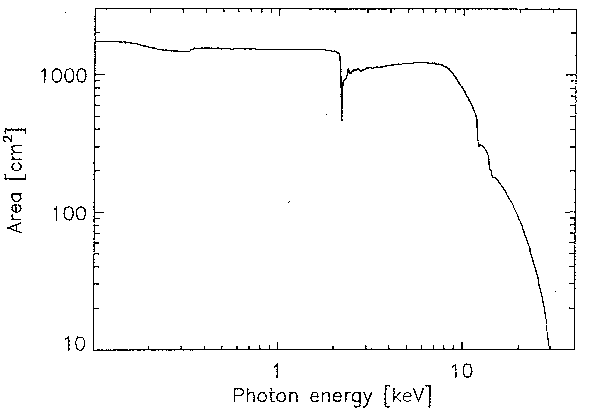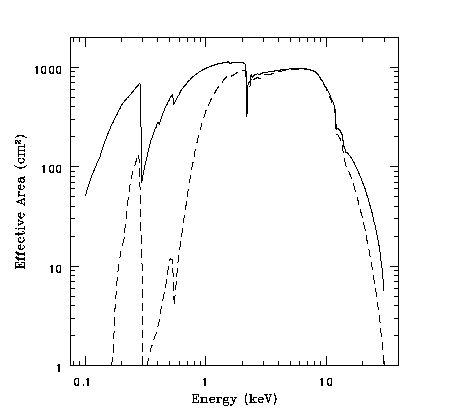

 |
 |
Jet-X at MSSL |
 |
SODART - XSPECT |
XSPECT is the general term for the Danish part of the SODART telescope. XSPECT consist of the SODART mirror modules (MM ), the Bragg panel - called the Objective Crystal Spectrometer (OXS) and the 4 proportional counters HEPC/LEPC.

| Field of view (arcmin) | 60 |
| Half power width (arcmin) | < 3 |
| Focal length (m) | 8 |
| Diameter: Inner Shell (cm) Outer Shell (cm) |
16 60 |
| Reflecting surface (Å gold) | 400 |
Effective area cm2
cm2@8 keV cm2@20 keV |
1460 1120 94 |
| Shell material (mm aluminium) | 0.4 |
| Shell separation (min -( mm)) | 0.52 |
| Shell length (cm) | 20 |
| Number of shells | 143 |
| Mass per telescope (kg) | 101 |
| Total mirrored surface (m2) | 62 |
The following table shows the main parameters for the OXS, implying the performance of the spectrometer.
| NATURAL CRYSTALS | LiF (220) | Si (111) | RAP (001) |
| Lines: H- and He-like | Fe | S & Ar | O |
| Bragg Angle (He-like) deg | ~41 | ~50 & ~39 | ~57 |
| Wavelength Range Å | 1.7 - 2.5 | 2.7 - 5.4 | 15.4 - 22.6 | >
| Energy Range keV | 5.0 - 7.4 | 2.3 - 4.6 | 0.55 - 0.81 |
| Rocking Curve Width arcmin | ~2.5 | ~1.6 | ~7 |
| Resolution (point source) E/dE | ~1250 | ~3200 | ~770 |
| Peak Reflectvity % | ~21 | ~35 | ~2 |
| MULTILAYER CRYSTALS | ML (001) on LiF | ML (001) on Si |
| Composition | Ni/C | Co/C |
| Wavelength Range Å | 56 - 83 | 44 - 71 |
| Energy Range keV | 0.15 - 0.22 | 0.175 - 0.28 |
| 2d Spacing Å | 96 | 79 |
| Number of Layers | ~60 | 65-80 |
| Peak Reflectivity % | ~20 | 12-22 |
| Resolution (point source) E/dE | ~55 | 52 |

Figure 1. The HEPC and LEPC effective area
| Energy resolution | 0.32 x (E/1 kev)½ keV |
| Background rejection | > 99 per cent |
| Time resolution | < 10 microsec |
| Gas | Xe 90%, CH4 10% |
| HEPC | LEPC | |
| Field of view (arcmin) | 60 | 30 |
| Diameter of active area (mm) | 150 | 75 |
| Diameter of window (mm) | 140 | 70 |
| Position resolution (mm) | <1 | <2 |
| Energy range (keV) | 2 - 25 | 0.2 - 8 |
| Gas thickness (cm) | 4 | 4 |
| Gas pressure (atm) | 1 | 0.5 |
| Window : Polyimide (microns) | 7.5 | 0.85 |
| Al (nm) | 52 | 38 |
Astrophysics
group Homepage
MSSL Homepage